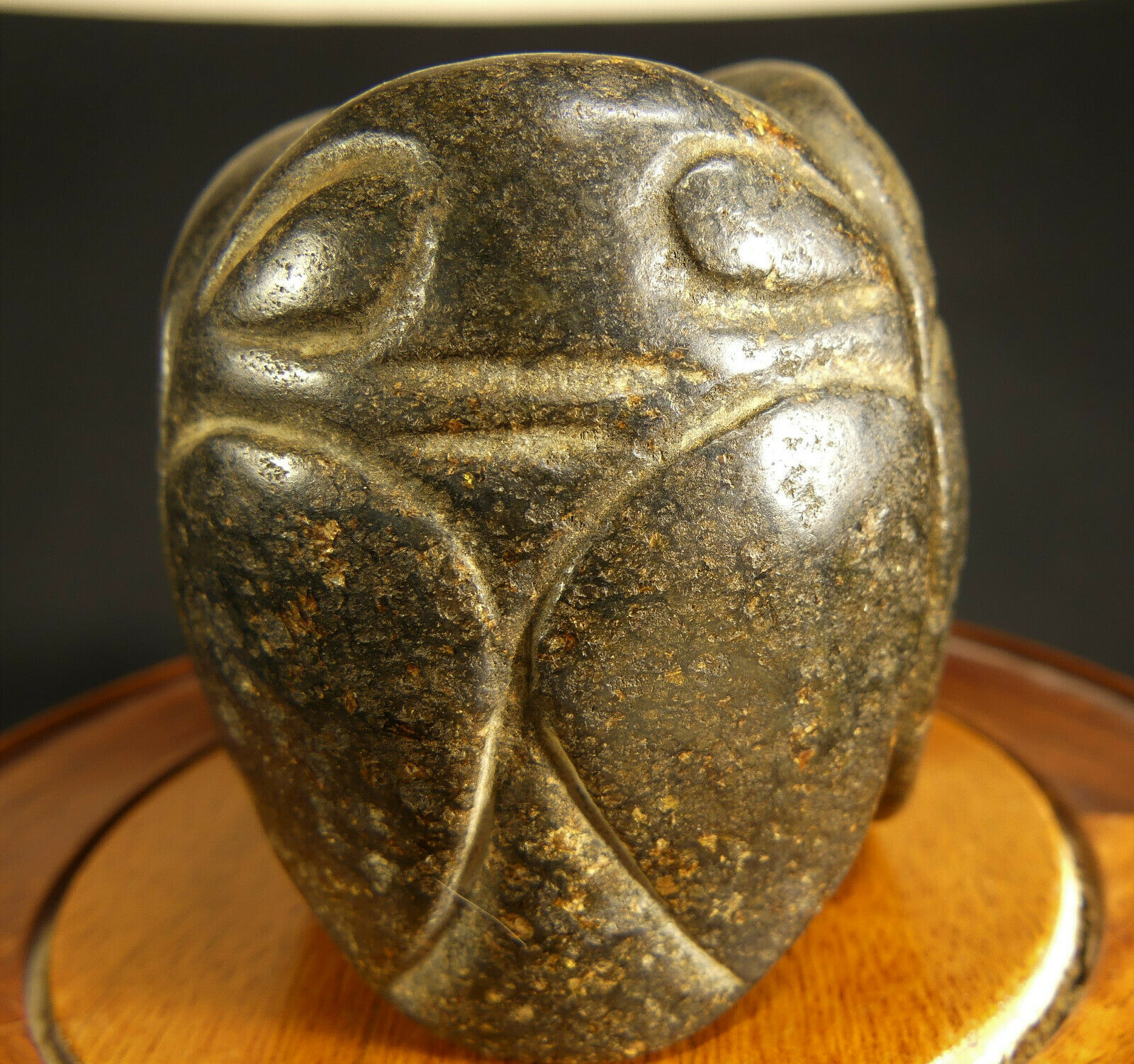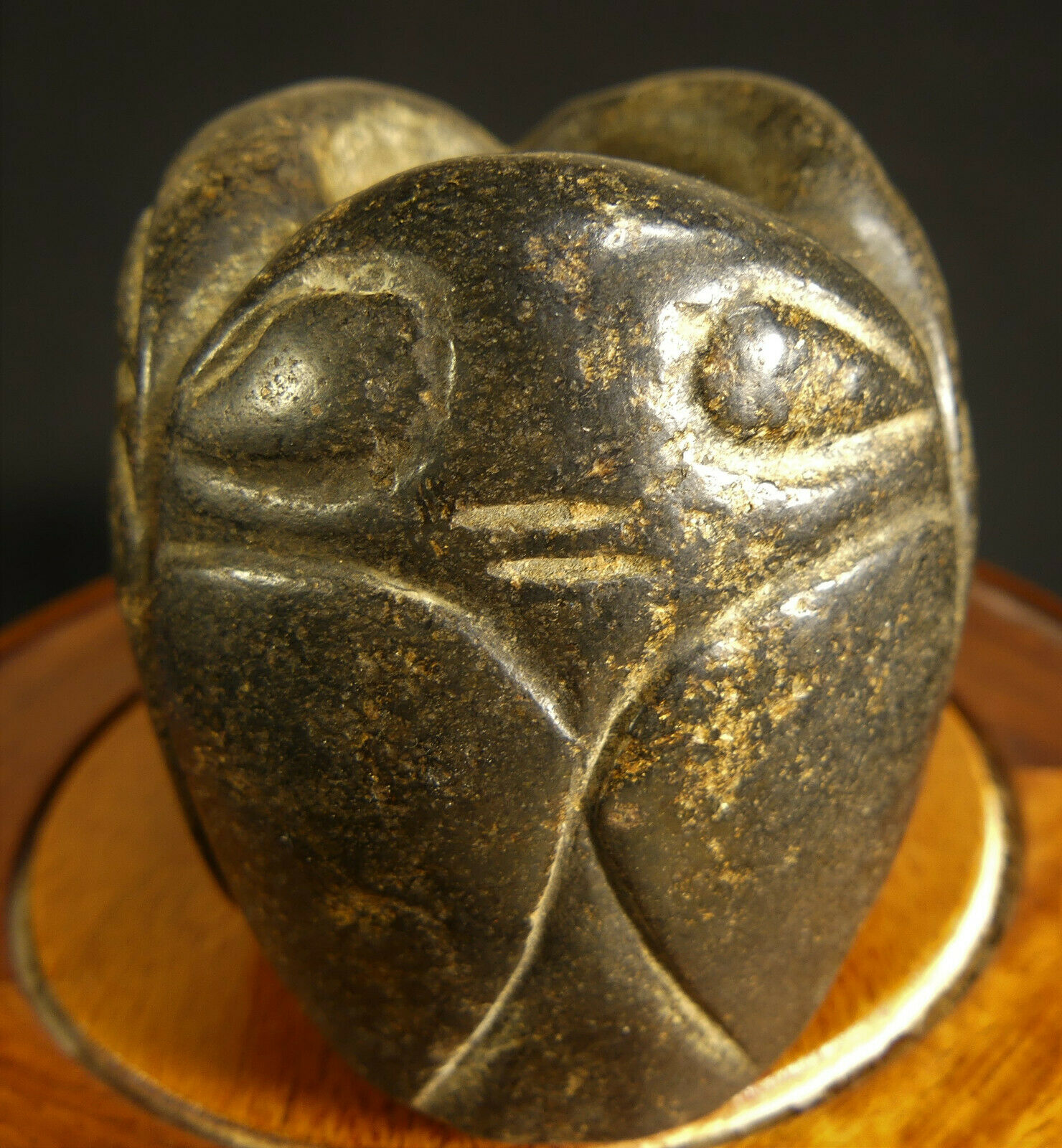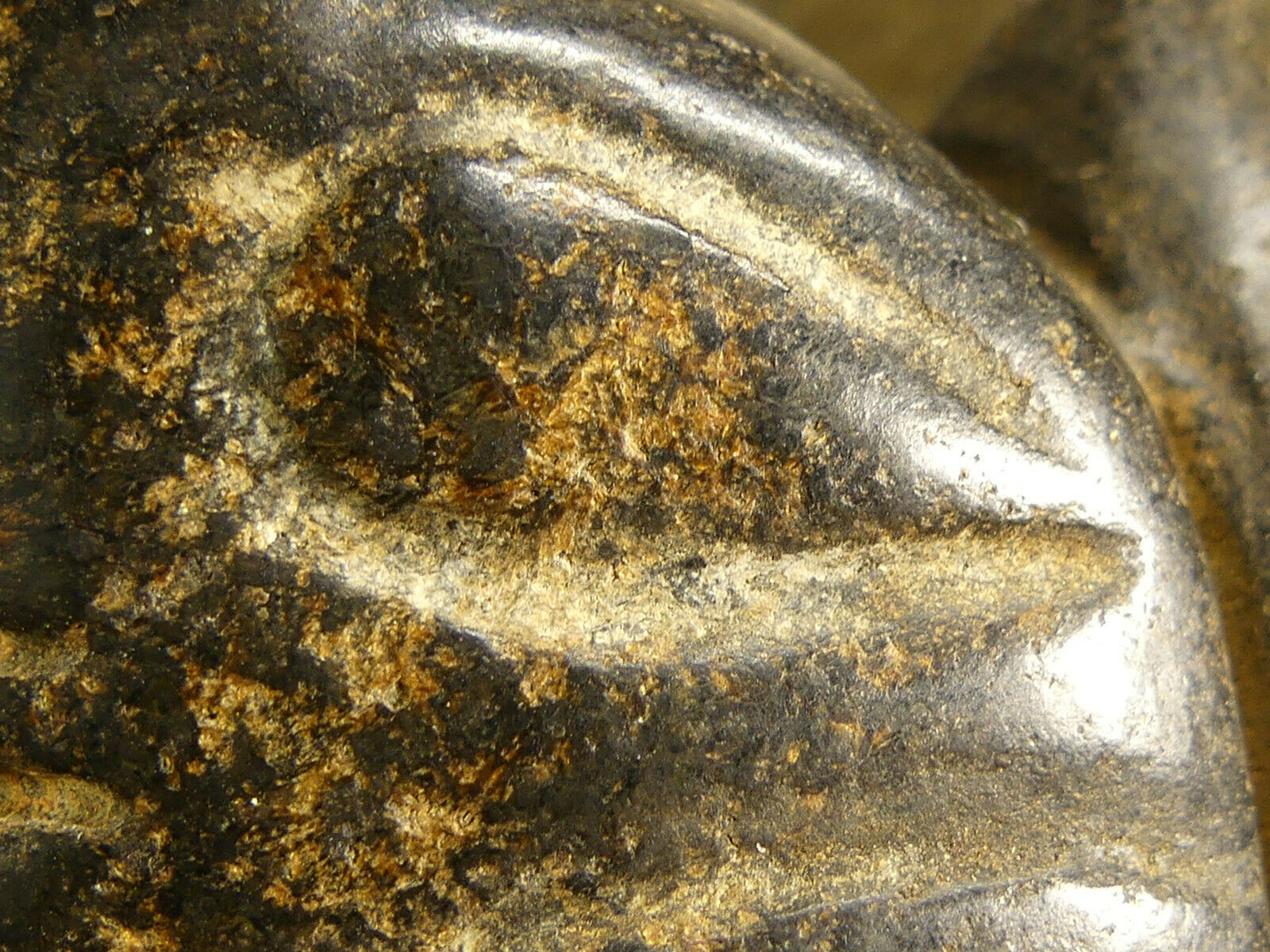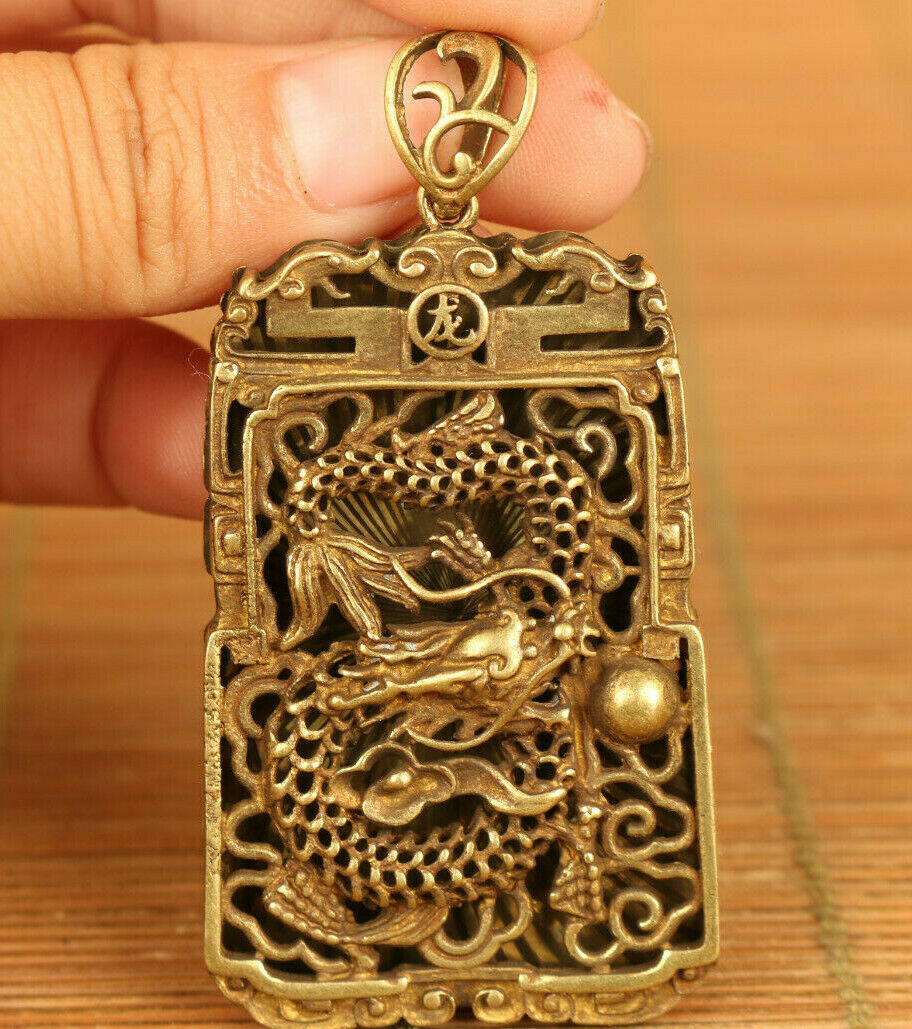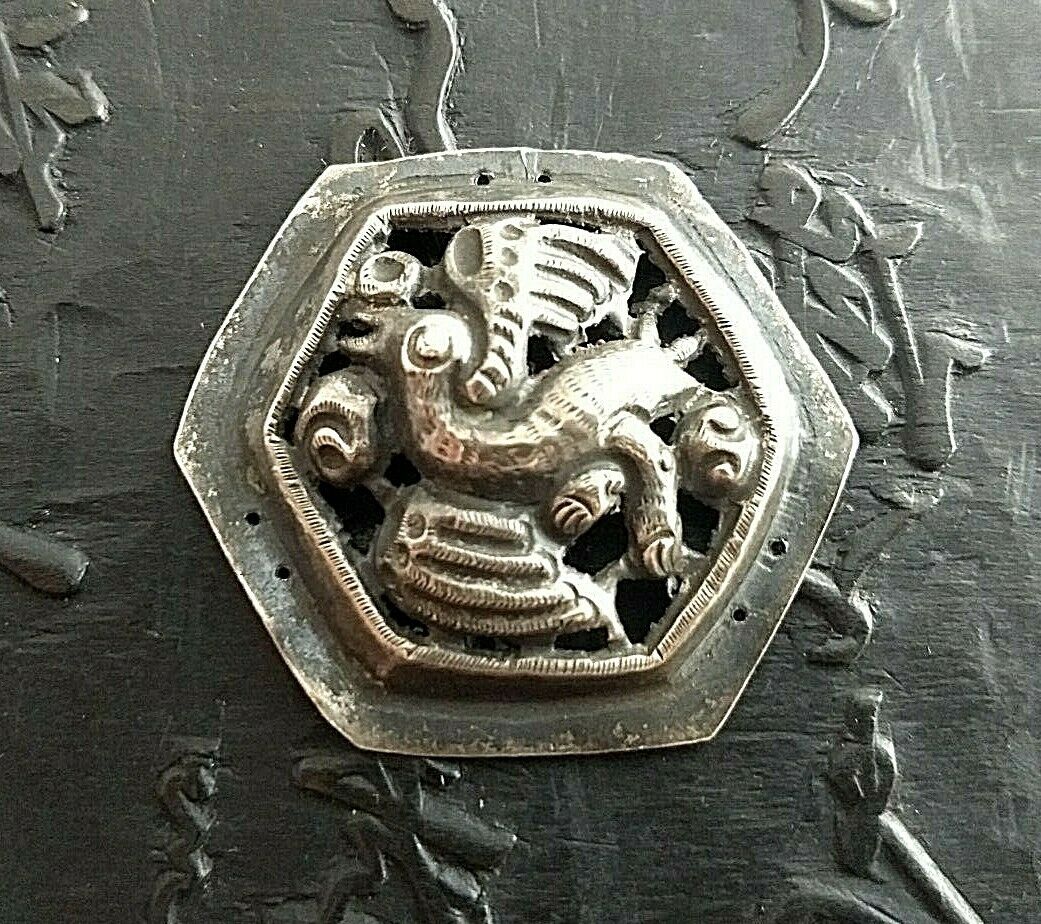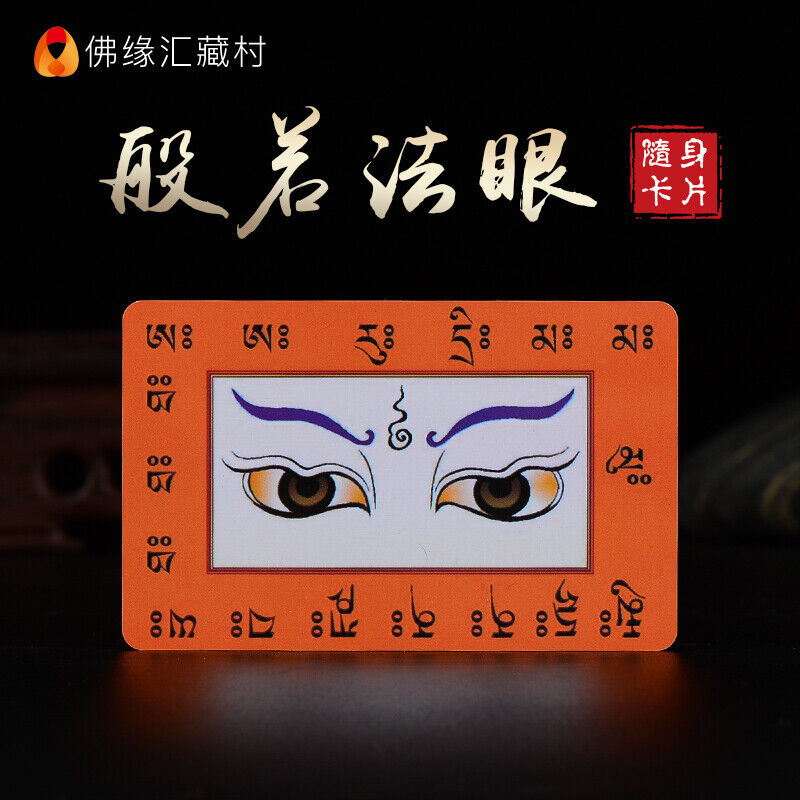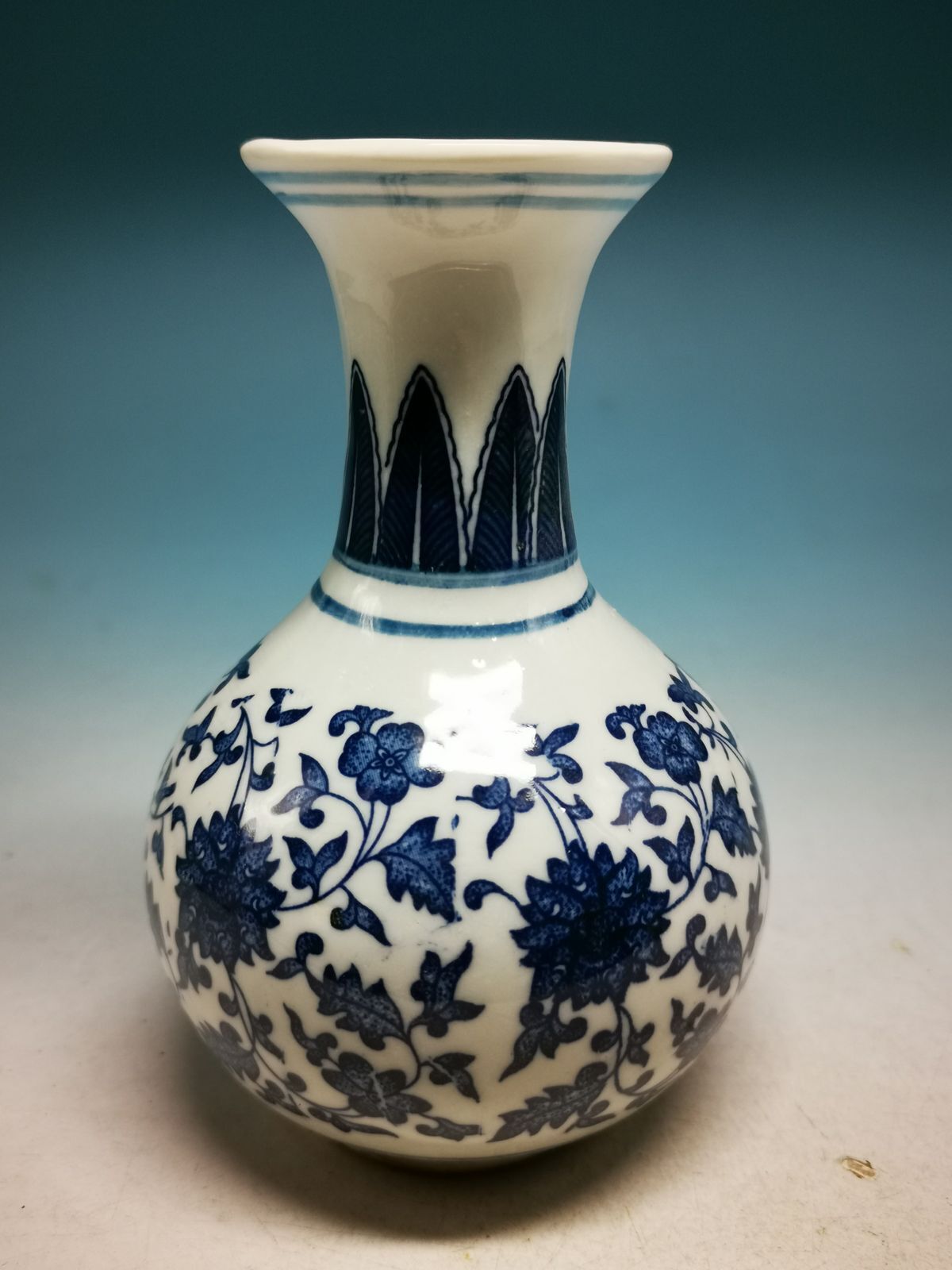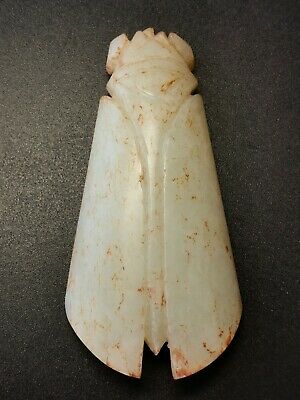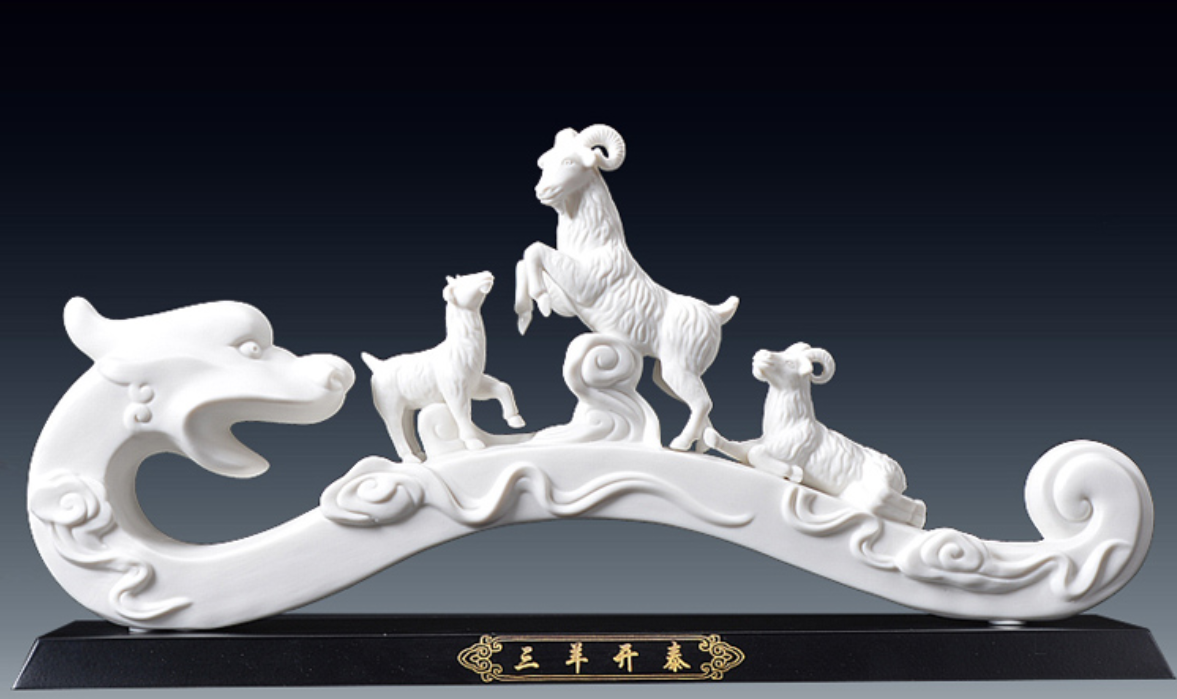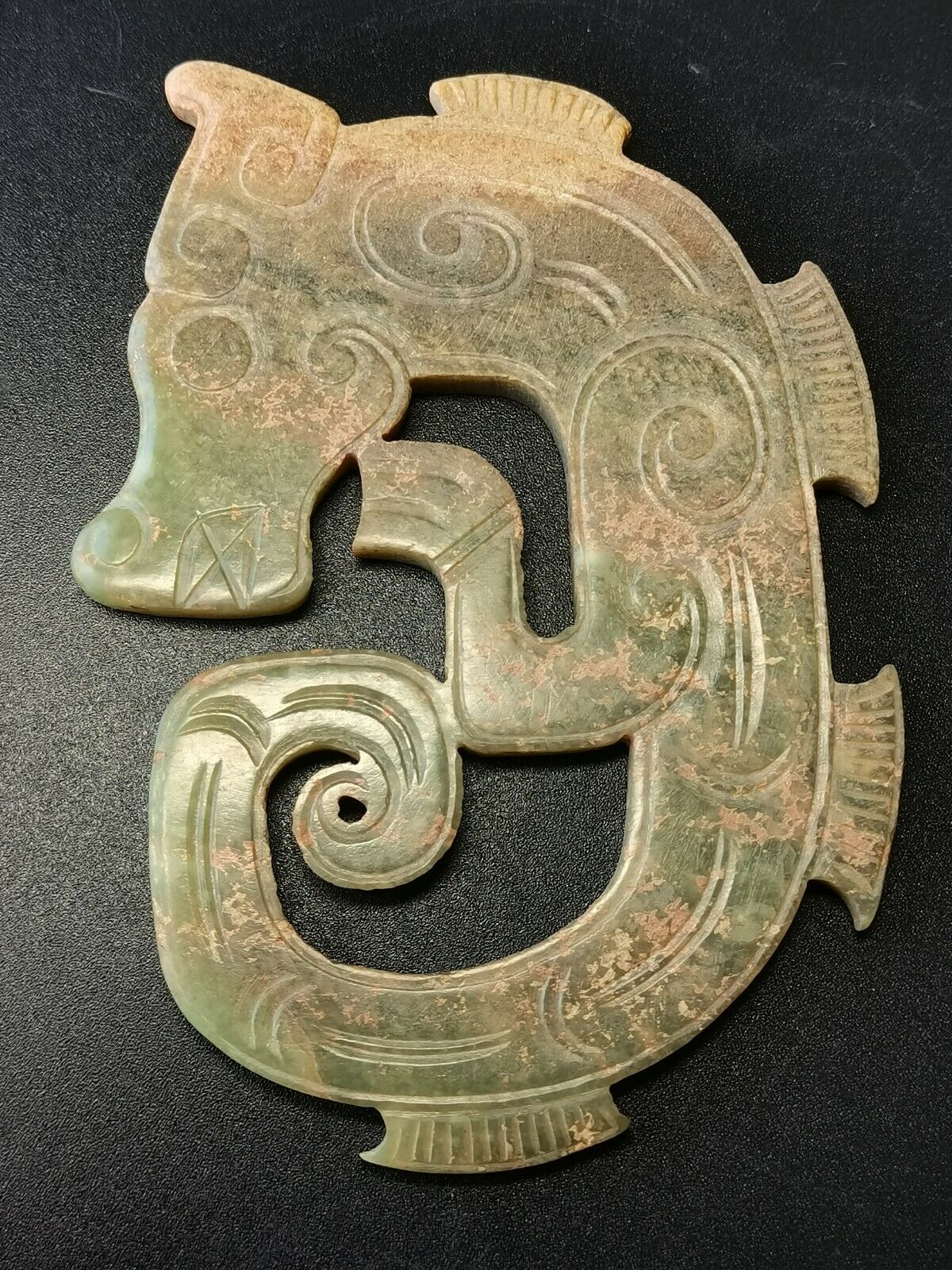-40%
RARE Neolithic Chinese Jade Three Cicada Heaven (Ti’en) Amulet w/Translation
$ 2085.6
- Description
- Size Guide
Description
ANCIENT CIVILIZATIONSArtifacts, Antiques & Fine Collect
i
bles
Neolithic Chinese
Jade 3 Cicadas Heaven (
Ti'en
)
Amulet
c.
Hongshan Culture
4500 BC--2250 BC
English Translation of Chinese Characters!
“A gentleman always carries a jade pendant, as a symbol of class and to remind him of the virtues of a gentleman,
since those virtues were found in jade
.”
—Confucius
NOTE:
William Houghton, the President of ANCIENT CIVILIZATIONS
, a State of Washington Licensed Business, assumes all responsibility for the information contained in this description and for the English translation and transcription of the ancient Chinese graphic characters.
Furthermore, I prohibit the further dissemination of this information in any written, video, or electronic format without my expressed, written approval.
Thank You!
SUMMARY
Approximate Measurements:
·
Weight:
8.1 oz. (231 gr.)
·
Height: 2.32” (59 mm)
·
Diameter:
2.11” (54 mm)
·
Hole Diameter:
.98” (25 mm)
This large, Neolithic Chinese Cicada Amulet is made of pure, Nephrite Jade that weighs about 8.1 oz. (231 gr.).
The once green jade has turned a wonderful shade of dark brown with orange highlights from the iron in the soil that has been absorbed into the jade.
The cicada is an insect that lives most of its live underground and then every 17 years of so, hatches into a flying insect.
It was considered a sign of rebirth or resurrection and a symbol of eternal life in Heaven (
Ti’en
).
And the three cicadas were thought to be very auspicious and to symbolize
the Chinese character (word) for the Three Powers of Heaven, Earth, and Humanity ("
San
" in Chinese).
Chinese experts estimate that it was made during the Hongshan Culture of ancient China about 6,000 years ago!
This is an exceptionally large example and I Guarantee it to be authentic and original!
This amulet has petroglyphs that have pecked into the surface as a dedication/inscription to the Ancestors; some even small enough to fit inside the eyes of the cicadas!
See below for my English translation of these petroglyphs/characters that are the earliest written language in ancient China.
DETAILS:
Jade was highly prized by these early civilizations in China and it was thought to have positive energy to drive away evil spirits and bring good luck and fortune to all who wore a piece on their person--in life and in death.
The production of jade items was completely controlled by the powerful warlords that ruled ancient China millennia ago.
Jade was also believed to be a portal or messenger that could carry prayers to Heaven and send messages to those on Earth from departed ancestors and Gods in Heaven.
This ancient jade Amulet/Finial in the shape of a large bead has not one, but three images of the immortal, Chinese Cicada, in Chinese “
Chan
” and pronounced “
Han
.”
It is an incredibly early and large amulet, and is one of the few examples that has more than one cicada.
The large center hole suggests it may have been the finial or endcap for a long, standard, wooden spear or other weapon.
However, most cicada amulets have been found around the head or in the mouth of the deceased in tombs.
Cicada are a noisy insect that is a bit like a grasshopper.
Cicadas spend a long time in a pupa before being 'reborn', so to the ancient Chinese, the cicada represented long life and rebirth. They were often put on birthday presents to wish that person many more birthdays.
It may have served as a ritual sacrifice as jade was considered by the Hongshan people to be the most valuable item they owned.
Jade was also thought to ward off evil spirits, which were thought to inhabit both Heaven and Earth.
SYMBOLISM
The large center hole is classified as a “double-bevel hole” that was drilled by hand from both sides with a slow-speed drill.
It is period correct and shows the growth of tiny micro-crystals of jade inside the bore holes that can only happen after a piece of carved jade has been buried for thousands of years.
These tiny crystals almost look like white powder and should never be cleaned off or removed.
This hole was made so a person could attach the pendant/bead around his neck or to his waist.
In ancient China, this amulet would have been placed in the tomb or temple of the departed by his family to protect him or her from evil spirits on his journey to the afterlife and to allow him/her to enter Heaven (
Ti’en
).
It would also show the ancestors and spirits that he was a wealthy and honorable person and that he had Mandarins that could speak to the Heavens for him.
In China, the cicada (“
Chan”
) is also known as “
zhiliao
” (literally “know, understand”), because the songs of the insect sound like the phrase “
zhiliao
” in Chinese.
In ancient China, there was even a fabric named “cicada wing silk,” because it was as thin as cicada wings. And hand fans made of this fabric were called “cicada wing fans.”
Ancient Chinese people also regarded the cicada as a symbol for noble and unsullied qualities, due to its exposure to the natural world.
That's why an ancient scholar would express his nobility by comparing himself to a cicada.
TRANSLATION
This amulet has several very small petroglyphs that have pecked into the surface as a dedication/inscription to the Ancestors; some even small enough to fit inside the eyes of the cicadas!
See below for my English translation of these petroglyphs that are the earliest written language in ancient China.
Between the eyes of each of the three cicadas are two parallel lines “=” that in ancient Chinese is the character “
Erh
” that means “
two
.”
But in this context on a jade amulet it more precisely can be translated as “the number of the Earth, because it makes the pair with Heaven (
Ti’en
).”
It can also represent the two souls of the departed, as one soul stays with the body in the tomb, while the other immortal soul can be transported to Heaven and eternally live with the Ancestors.
In one of the cicada’s eyes, there is the character for “
grandson
” that looks somewhat like a frog.
It is very small—only about 2 mm long!
These incredible small characters were meant only for the eyes of the Ancestors.
Human eyes were not worthy to see or read them. {See 10x macro photos # 3 & 6}
This lovely amulet contains three, bold Chinese Cicadas that have been incorporated into the design of this amulet.
The number “3” (in Chinese “
San
”) has always been considered lucky, as historically it represented “Heaven, Earth, and Humanity.”
·
Confucius said: ‘
Three people are walking together; at least one of them is good enough to be my teacher.’
·
A Chinese proverb goes that “
The wisdom of three ordinary people exceeds that of the wisest individual.
” Here, the number ‘three’ means not only the exact number, but also ‘many’ abstractly.
Moreover, the number ‘Three’ has its origin in Confucianism and Taoism.
It stands for Heaven, Earth and Human being; philosophically, ‘
Tao
’ means the amiableness among the above three elements.
In Chinese tradition, the phrase ‘
San Huang Wu Di
’ (Three Emperors and Five Sovereigns) generally refers to all emperors of ancient China.
Besides, much wider uses of this number can be found in Chinese culture, concerning proverbs, history, and common sense.
This configuration represents the power of jade and of the cicada to transport the soul of the departed safely from Earth to the Heavens and eternal life.
In macro photo # 4, you will see several characters/pictographs inside a black rectangle I have highlighted in the photo.
Besides the images of the Son and of Ancestors, you will see an “X” inside a circle “O” which is from the 149 Chinese radical, and can mean “fields” or “land” or the “germination of a seed.”
By extension, this character also means “to grow, the beginning, a starting point” as the transformation of the soul of the departed to Heaven is considered the beginning of the soul’s eternal life in Heaven.
In photos # 1 & 8, you can see an upside-down "V" design between the cicada's wings.
I believe this is an ancient form of the character for "man" ("
Jen
" in Chinese) and/or a "suspended Pendant" ("
Ch'ui
" in Chinese).
The center hole even has characters engraved on the "inside" of the hole! I can see the character for "offering" or "gift" which is the right hand. Again, these words were meant only for the Ancestors, as human eyes were not worthy to see or read them.
In macro photo # 11, if you look carefully you will seen several characters, including the frog-like image that represents the grandson who is also making an offering to the Ancestors on behalf of his grandfather.
Condition:
The jade amulet/bead has a single, large, hole that was drilled by ancient hand tools from both sides of the amulet--see macro photos.
It is period correct and has a wonderful layer of calcium and micro-crystalline jade inside the bore holes—just perfect.
{See macro photo # 7.}
I have examined this piece under 10x and 80x magnification and it shows no signs of modern tool marks--only hand tools were used to make this amulet.
It has been cut, carved, shaped, and drilled with ancient hand tools.
I also examined it under Black Light and found no signs of repairs or modern carving.
Modern drills would have drilled the hole straight and true—and not larger on the outer edge of the hole.
Thus, these ancient, drilled holes are another sign that this amulet is original and authentic.
This ancient amulet is a fine work of art and it is truly a museum quality study piece of great historical significance.
Its beauty and attention to detail is remarkable!
This ancient Amulet is a fine work of art and it is truly museum quality.
It would also make a super Gift!
Please examine the photos taken at 4x and 10x macro carefully as they are part of the description.
The stand and AA battery are not part of the auction, just included to give you a better perspective.
And please ask any questions before you buy.
Thank You!
I GUARANTEE this amulet is ancient and authentic or your money back!
Note:
Please ask any questions you may have before you bid!
Thanks for Looking!
Per e-Bay's rules, PayPal only please!
THANKS!
FREE SHIPPING for USA includes INSURANCE for all 50 United States.
REFERENCES
Museum of Chinese History, Beijing
The Ancestral Landscape
, David N. Knightley, 2000
The Great Bronze Age of China
, edited by Wen Fong, MET, 1980
Changhua Annals of the Republic of China
(1911–1949)
British Museum,
Jessica Rawson
Smithsonian Museum, Sackler & Freer Gallery, WDC
MET, NYC, New York
Chinese Characters
, Dr. L. Wieger, S.J.
"
JADE
" by Roger Keverne
International Buyers may have additional import duties or taxes that are the responsibility of the Buyer.
